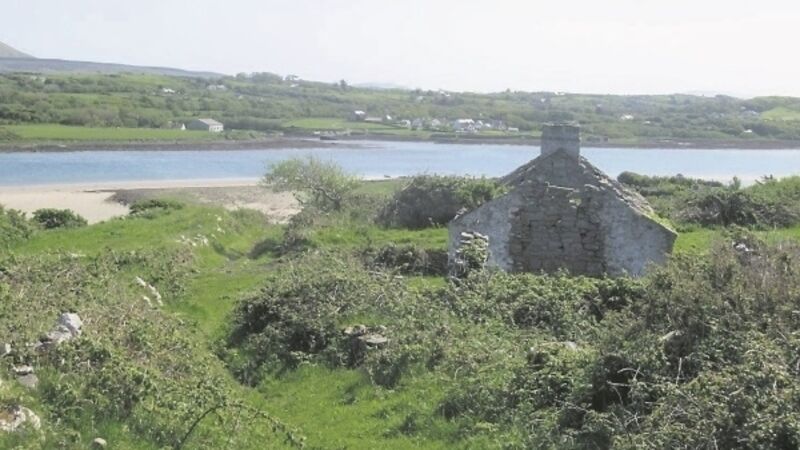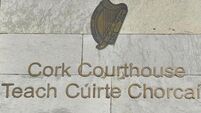Dernish in touch with the past

The past can be a lot closer than we imagine. When jewellery designer Martina Hamilton visited Dernish Island in Co Sligo a few years ago to visit the home of her forebears she can’t have expected to have found any remnants of her past, apart from the farmhouse they lived in, writes
The island was the home of her great, great, great, great grandmother Anne Gillan. Standing outside the ruin of the Gillan farmhouse for the making of a video, Martina traced her finger along the wall and in so doing she inadvertently found the name of her forebear indented into the stonework - G.i.l.l.a.n.
People writing, carving or scratching their names on the walls of the family home is not unusual but it is extremely poignant when it is your ancestor. Martina has visited the islands many times and its natural features have inspired her internationally acclaimed work. “It was strange how the light was falling. it just caught the outline of the name,” says Martina.
For her, Dernish is a magical place. “Not many people know about it. It’s one of those secret spots. I’ve always had this thing about the sea, this aesthetic, where I get my ideas from, such as walks on Streedagh Beach,” she says.
Maybe she was inspired without knowing her own connection to the island?
Exactly. It kind of confirmed that we are all ciphers for something that went before us. I love the place and it keeps giving me ideas.
Depending on the time of year it can be rusty and autumnal or it can be a beautiful shade of green, like a jewel floating in the sea. she says.
Dernish is an uninhabited, relatively hilly island, which lies just off the main Co Sligo to Co Donegal road between the villages of Grange and Cliffony. It was once home to several families: the aforementioned Gillans, Mulligans, Gallaghers and Kellys who farmed and fished there. The island also had a reputation in lacemaking.
In the 19th century it was a possession of the infamous landlord Palmerston who evicted residents from their homes on a whim. Many died on Famine ships en route to Canada. It has been suggested, but without evidence, that the ancient Fomorian tribe had a base on the island.
A signpost for Streedagh Beach takes you to Conor’s Island which started life as an island but which has joined the mainland with the build-up of sand over the years. It is a wonderful stroll from Streedagh Point at low tide through the sand-dunes watching the waves crash on the shore.
A little further on is Dernish, but beware the turning tide. Yeats’s brooding beauty of Ben Bulben watches over the island, an inescapable form, and across Donegal Bay the famous Slieve League cliffs tower above the sea.
Further along the road from Dernish is Mullaghmore which is the departing point for visits to the former monastic settlement of Inishmurray.

Access to the island is from the pier at the quaintly named Milk Harbour. There is no ferry across the 500m or so of sheltered water, so you’ll have to make your own arrangements.
Milk Harbour, formerly known as Milk Haven (haven, a port — Castlehaven in West Cork, Bremerhaven, Germany), was the site of a well-known boatbuilding tradition where the McCann family crafted clinker-built boats to order. Their old boats and tools were recently handed over to the National Museum as the yard is no longer in operation.
A 19th-century poem written by an anonymous emigrant recalled Dernish fondly, if not heartbreakingly. A video of the reading by some of the descendants of the island’s residents is on Youtube.
Dernish
: sligokayaktours.com or walk
: www.thecatandthemoon.ie
:
islandviewridingstables.com
dernishislandcamping.com














